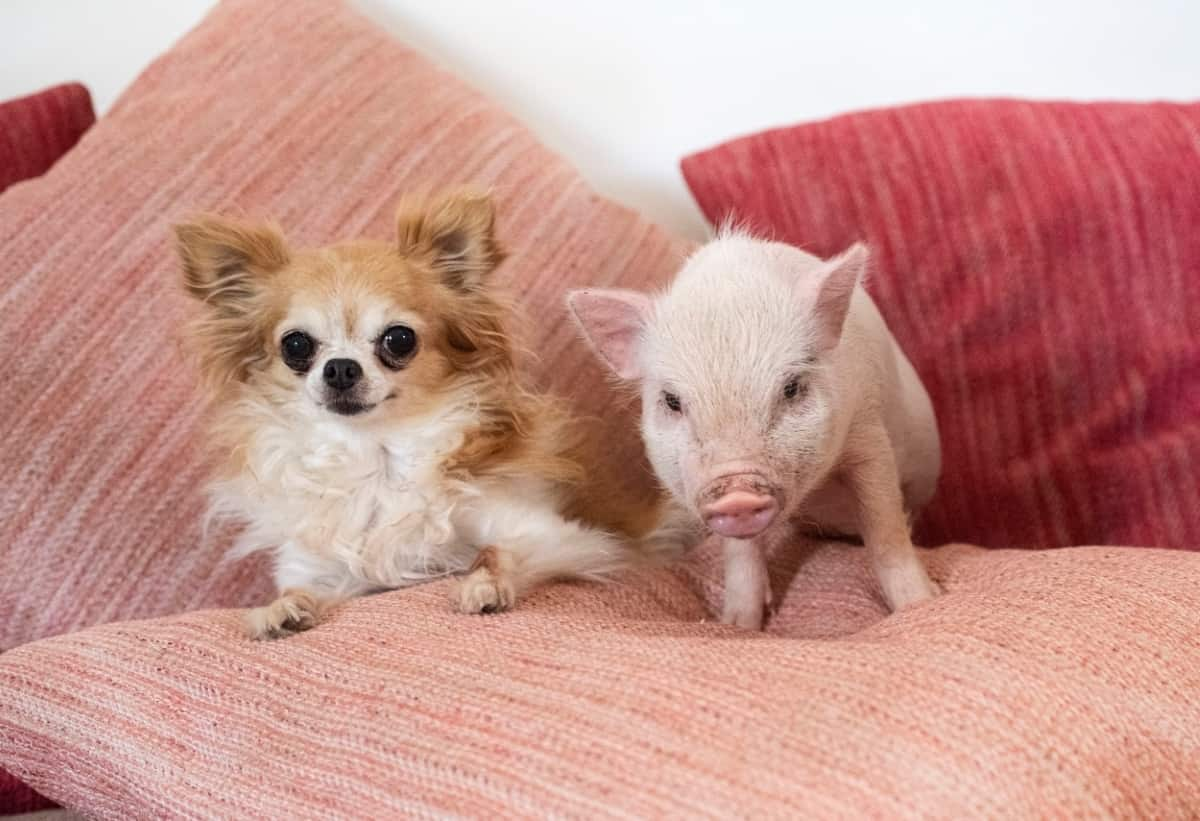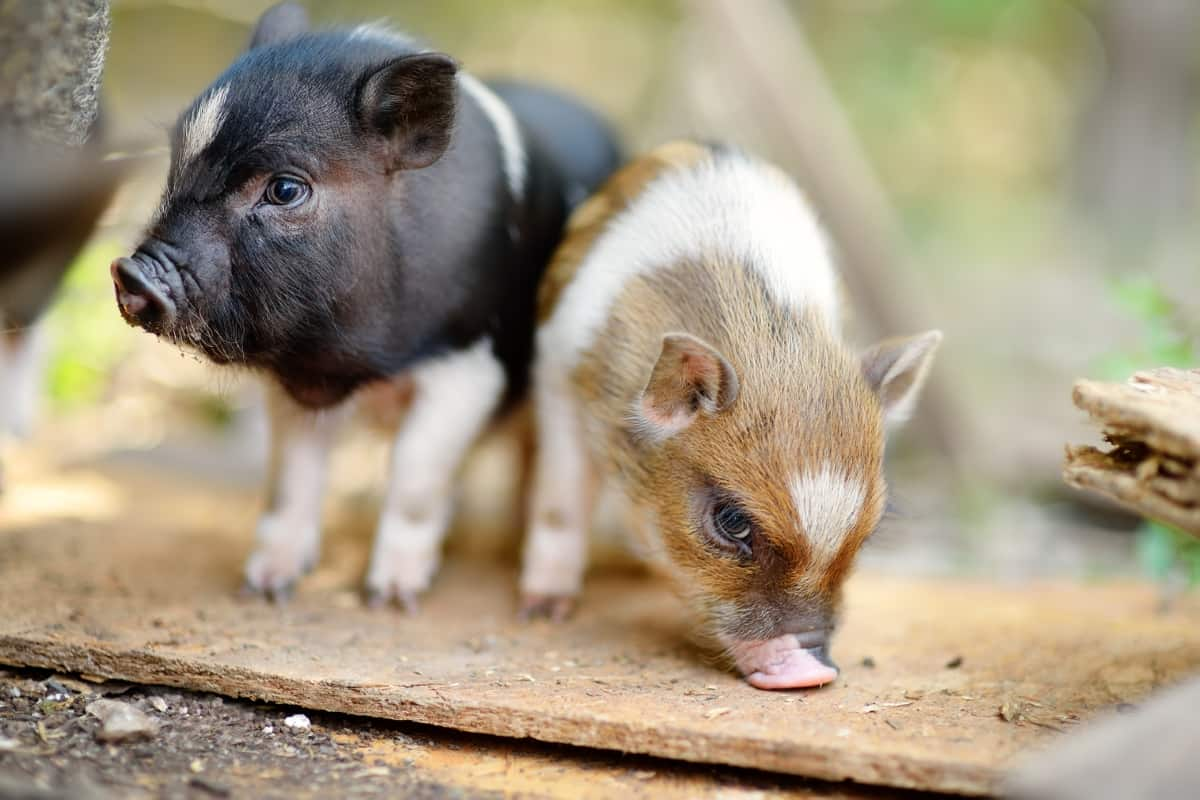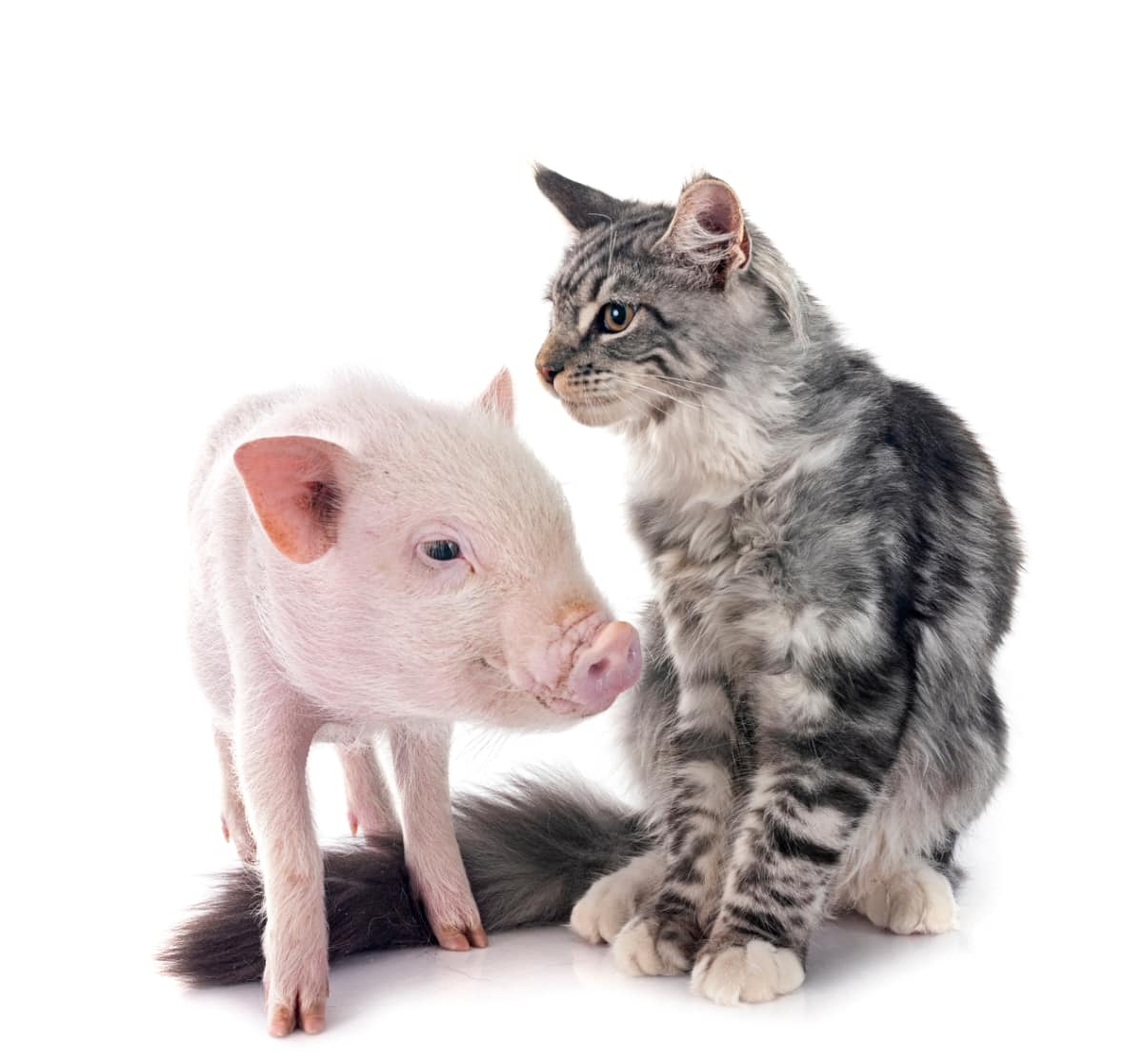Teacup pigs, often celebrated for their cute size and friendly nature, have become a popular choice for unconventional pet lovers. While the allure of mini pig adoption is strong, it’s crucial to delve into teacup pig care, understand the realities behind teacup pig price, and set appropriate mini pig size expectations. Prospective owners should be well-informed about teacup pig health issues, the specifics of mini pig diet and nutrition, and its lifespan to ensure they are fully prepared for the commitment.

Behavioral traits of mini pigs, their housing requirements, exercise needs, legal ownership concerns, and the overall costs of raising a teacup pig are essential factors to consider. It’s also vital to approach reputable teacup pig breeders to avoid common pitfalls and ensure these charming animals’ well-being while considering the importance of mini-pig mental stimulation and obesity prevention.
Understanding the Term ‘Teacup’
The term ‘teacup’ in teacup pigs is a marketing gimmick rather than an accurate descriptor of their size. Initially, these pigs are small and might fit into a teacup, where the name originates, but they grow larger than many expect. Potential owners must understand this to avoid surprises as their pet matures. This term can lead to misunderstandings about these animals’ true nature and needs, emphasizing the importance of education and realistic expectations in teacup pig care.
Ultimate Guide to Teacup Pigs
Misconceptions About Size
Realistic Size Expectations
Realistic size expectations for teacup pigs are essential to avoid disappointment and ensure proper care. Despite the ‘teacup’ moniker, these pigs can grow to weigh between 40 and 70 pounds, significantly larger than what many people envision. Understanding this growth potential is crucial for prospective owners to prepare adequately for their pet’s space, dietary, and exercise needs, ensuring their pig’s happy and healthy life.
Health and Lifespan
Common Health Issues
Teacup pigs face common health issues that require attentive care and preventative measures. Various health issues such as obesity, skin ailments, and hoof problems can arise in pigs due to poor diet, lack of exercise, or inadequate living conditions. Maintaining regular veterinary check-ups, ensuring a balanced diet, and implementing proper hygiene practices are crucial for addressing and preventing these issues, thereby promoting the overall health and well-being of the pig.
Expected Lifespan
The expected lifespan of a teacup pig is an important consideration for potential owners, with these animals often living 12 to 18 years. This long-term commitment requires a deep understanding of what’s involved in teacup pig care, including regular health check-ups, a suitable living environment, and a proper diet to support their well-being.
Diet and Nutrition
Feeding Your Teacup Pig
A diet primarily consisting of specially formulated mini pig pellets, supplemented with fresh vegetables and a limited amount of fruits, ensures they receive all the necessary nutrients without excessive calories. Avoiding human food and high-calorie snacks is essential to prevent nutritional imbalances and health issues.
Avoiding Obesity
Avoiding obesity in teacup pigs is a significant concern, as their small size makes them prone to weight gain, leading to severe health complications. Portion control, regular exercise, and a diet tailored to their needs are vital in maintaining a healthy weight.
Behavioral Traits
Social and Intelligent Nature
Teacup pigs are known for their social and intelligent nature, making them engaging pets that thrive on interaction and companionship. They enjoy being part of the family and can form strong bonds with their owners. Providing social interaction, whether with humans or other pets and ensuring they are part of daily activities can greatly contribute to their emotional well-being.
Need for Mental Stimulation
The need for mental stimulation in teacup pigs is paramount due to their high intelligence. Enrichment activities like puzzle toys, foraging games, and training sessions can keep them mentally stimulated and prevent boredom-related behaviors. Regular engagement in such activities promotes cognitive health and enhances the bond between the pig and its owner.
In case you missed it: 10 Best Pig Weight Gain Supplements: Top Swine Weight Gain Formulas

Housing Requirements
Indoor Space Needs
The indoor space needed for teacup pigs should accommodate their size and activity level, with at least 36 to 48 square feet of space recommended for them to move around comfortably. This space should be safe and pig-proofed and include areas for sleeping, eating, and playing to ensure a secure and stimulating environment.
Outdoor Access
Ensuring teacup pigs have outdoor access is vital for their overall well-being, enabling them to partake in natural behaviors like exploration, foraging, and engagement, promoting both physical and mental health. A secure, pig-friendly outdoor space where they can roam and play is essential for their well-being, contributing to their overall quality of life and preventing obesity and boredom.
Exercise and Activity
Importance of Regular Exercise
Regular exercise is vital for teacup pigs to maintain their physical health and prevent obesity, a common issue in the breed. Daily activities help manage their weight and contribute to their emotional well-being, reducing the risk of boredom and related behavioral problems. Incorporating a routine that includes indoor and outdoor activities ensures that teacup pigs stay active and engaged.
Activity Ideas
Activity ideas for teacup pigs can range from outdoor walks and exploration in a secure area to indoor games stimulating their intelligence. Engage pets with puzzle feeders, treat hide-and-seek, and obstacle courses to promote physical activity and cognitive engagement. These activities keep them fit and strengthen the bond between the pig and its owner.
Legal Considerations
Zoning Laws and Restrictions
Understanding zoning laws and restrictions is crucial before adopting a teacup pig, as many areas have specific regulations regarding keeping livestock or exotic pets. Potential owners must research local ordinances to ensure compliance and avoid legal issues, which may include restrictions on the number of animals, required space, or even bans on certain breeds.
Registration and Permits
Registration and permits may be necessary for keeping teacup pigs in some areas, emphasizing the importance of legal ownership. This can involve obtaining a pet license, registering the pig with local authorities, or securing specific permits that acknowledge the pig as a household pet rather than livestock, ensuring adherence to local regulations.
Cost of Ownership
Initial Adoption Fees
The initial adoption fees for teacup pigs vary widely, ranging from $600 to $5,000, depending on the breeder, the pig’s lineage, and other factors. This upfront cost is an important consideration for potential owners, highlighting the need to budget for the purchase and the setup of a suitable living environment.
Ongoing Care Expenses
Ongoing care expenses for teacup pigs include proper nutrition, veterinary care, housing, and enrichment activities, which can add up to $100 to $300 monthly. Regular health check-ups, a balanced diet, and living space maintenance are essential components of their care, underscoring the financial commitment required to ensure their well-being.
In case you missed it: Homemade Pig Feed Formulations: Cost-effective Starter to Finisher Feed Recipes

Finding a Reputable Breeder
Signs of a Responsible Breeder
Signs of a responsible teacup pig breeder include transparency about the pig’s genetic background, a willingness to provide health records and proof of veterinary care, and a genuine interest in the welfare of the pigs they breed. A reputable breeder will also ask potential owners questions to ensure a good fit and offer guidance on teacup pig care.
Red Flags to Watch out For
Red flags to watch out for when finding a teacup pig breeder include reluctance to show the breeding facility, lack of knowledge about the breed, and unwillingness to provide references or health guarantees. Other warning signs include selling pigs at too young a age and offering pigs at significantly lower prices than the market rate, which could indicate poor breeding practices or health issues.
In case you missed it: Euskal Txerria Pig Breed Profile: Exploring Physical Characteristics to Meat Production

Conclusion
Owning a teacup pig comes with responsibilities that encompass understanding their care, exercise needs, legal considerations, and managing the costs associated with their upbringing. Committing to a teacup pig means embracing a long-term responsibility that is as rewarding as it is demanding, ensuring a fulfilling life for the pig and its owner.
- Feed Your Flock for Less: Top 10 Tips to Save on Chicken Feed
- Ultimate Guide to Ossabaw Island Hog: Breeding, Raising, Diet, and Care
- Hatching Answers: The Top 10 Reasons Your Chickens Aren’t Laying Eggs
- Eggs and Economics: Breaking Down the Cost of Raising Backyard Chickens
- Defend Your Greens: Proven Methods to Keep Iguanas Out of Your Garden
- Ultimate Guide to Cinnamon Queen Chicken: A Comprehensive Guide for Beginners
- Ultimate Guide to California Tan Chicken: Breeding, Raising, Diet, Egg-Production and Care
- Ultimate Guide to Marsh Daisy Chicken: Breeding, Raising, Diet, and Care
- 10 Types of Chicken Farming Businesses You Can Start for Profits